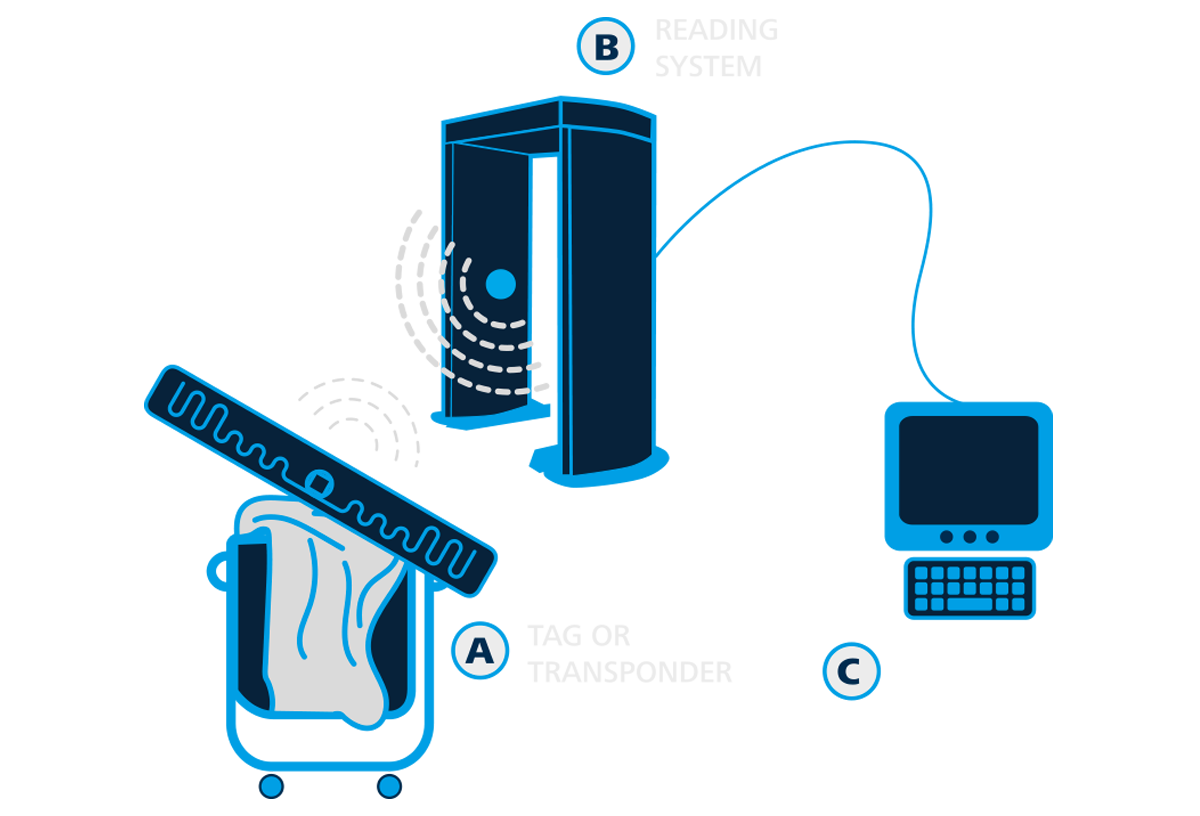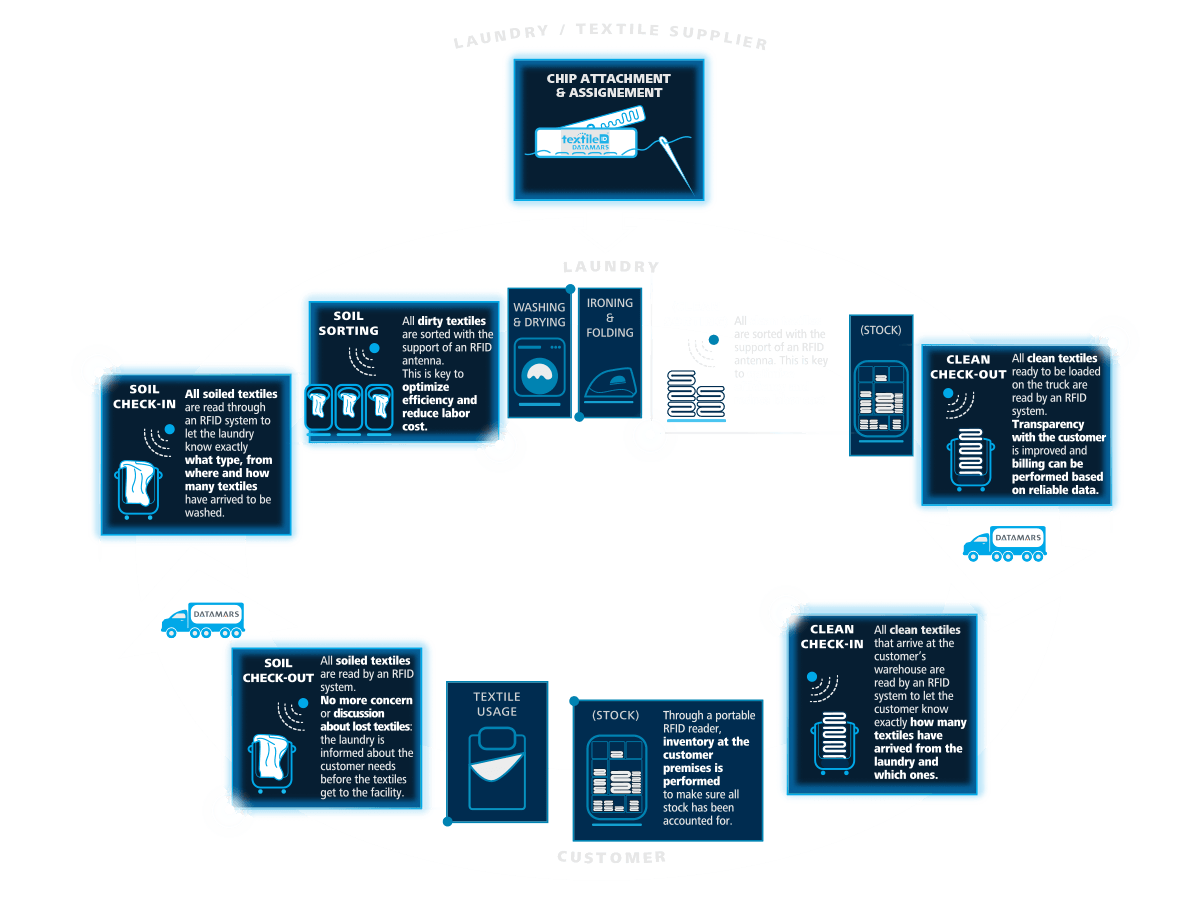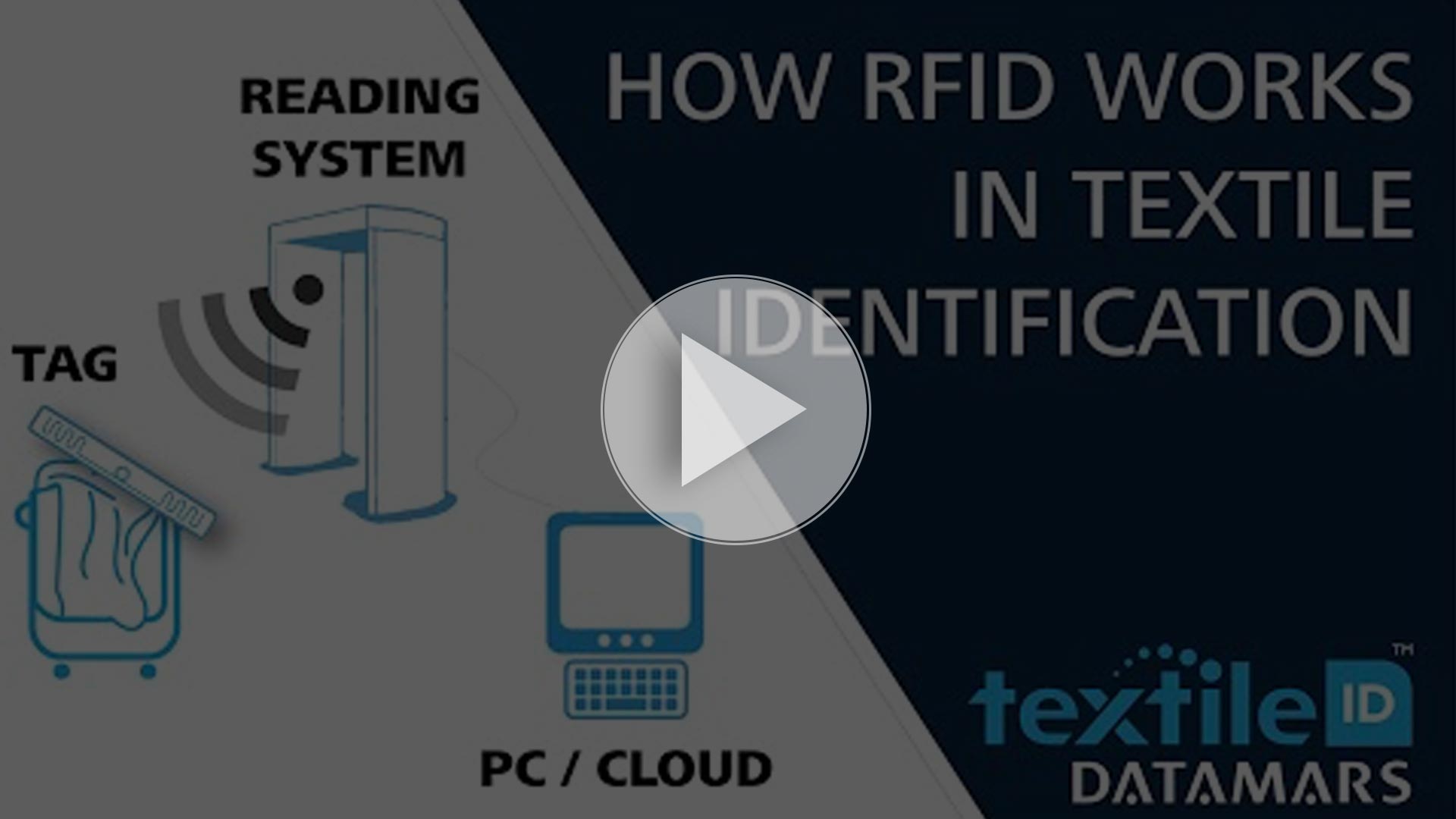
The elements of an RFID system
RFID (Radio Frequency Identification) is the wireless use of electromagnetic fields to transfer data through tags (microchips), these tags carry electronically stored information and are attached to objects/textiles in order to identify and track them automatically.
An RFID system is composed by tags (microchips) that carry the data and a reading system (composed by a reader with an antenna) that reads the data and sends it to a computer system.
1
The reader transmits a low-power radio signal through its antenna; this signal is received by the tag (via its own antenna) to power an integrated circuit (chip).
2
The tag uses the energy it gets from the signal when it enters the radio field and will briefly converse with the reader to verify, control and exchange data.
3
Once the data is received by the reader, it is then sent to a controlling computer for processing and management.
Integration of RFID in a typical laundry cycle
Once tags are attached to textiles they can be identified and tracked automatically in each step of the laundry process.
Smart reading stations implemented in correspondence of crucial phases of the laundry cycle allow the tags to be read, following each textile path, avoiding losses and getting important information in each phase.




